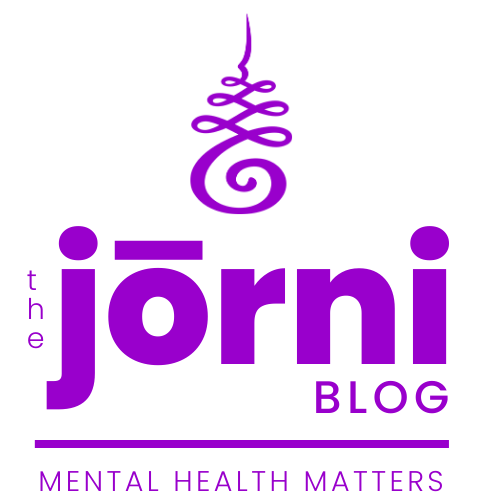The Path to Clean Living
Clean and healthy living is more than just eating clean and exercising regularly. It encompasses a holistic approach that includes various aspects of our daily lives, such as nutrition, physical activity, sleep, mental wellbeing, and environmental considerations. By focusing on these elements, we create a harmonious balance that can lead to improved mental clarity, higher energy levels, enhanced immune function, and reduced risk of chronic diseases.
One of the central tenets of clean and healthy living is reducing toxic exposure. We are exposed to numerous toxins every day, whether it be through the food we eat, the products we use, or the air we breathe. Minimizing these exposures can have a significant impact on our health and wellbeing, as toxins can disrupt our hormonal balance, damage our organs, and impair our cognitive function. By making conscious choices to use natural and non-toxic products, opting for organic foods, and ensuring a clean living environment, we create a safer and healthier space for ourselves and our families.
Living a clean and healthy life is not just a fleeting trend but a profound lifestyle choice that can significantly impact our mental and physical wellbeing. The concept revolves around making conscious decisions to reduce exposure to toxins and harmful substances, both internally and externally. By adopting this lifestyle, we can experience a wide range of benefits that go beyond mere physical health.
“We do not inherit the earth from our ancestors, we borrow it from our children.”
- Native American Proverb
A Trailblazer in Clean and Healthy Living
Shelly Jefferis, an educator, speaker, and mentor, has been at the forefront of the health and wellness profession for over 35 years. As a college professor, she brings her wealth of knowledge and experience to inspire and educate others on the benefits of clean living. However, her true passion lies in making a positive impact on the lives of others and mentoring them to live their best lives.

Shelly's dedication to clean living is evident through her creation of “Purge Your Pantry”, a program that provides education and practical suggestions for healthier living in our homes. With a focus on reducing toxic exposure, she empowers individuals to make informed choices about the products they use and the foods they consume.
Clean Living and Physical Health
Clean and healthy living extends far beyond simple lifestyle choices; it plays a crucial role in our physical wellbeing and can significantly impact our susceptibility to chronic and acute illnesses.
Digestive Problems
Consuming food contaminated with pesticides and chemicals can disrupt our digestive system. These toxins may interfere with the healthy bacteria in our gut, leading to issues like bloating, constipation, and even more chronic digestive disorders. Opting for organic or locally-sourced food can help in maintaining a healthy gut environment.
Asthma and Respiratory Issues
Household cleaners, air fresheners, and even some beauty products can contain volatile organic compounds (VOCs) and other chemicals that irritate the respiratory system. This can exacerbate or even lead to chronic respiratory conditions such as asthma. By choosing natural and non-toxic cleaning products, we can breathe easier and protect our lungs.
Hormonal Imbalance
Certain toxins, known as endocrine disruptors, can mimic or interfere with the body's hormones. This can lead to imbalances that affect everything from reproductive health to metabolism. Awareness and avoidance of products containing these disruptors, such as some plastics and personal care products, can support a more balanced hormonal system.
Skin Irritations
Our skin is our largest organ and often the first to react to harmful chemicals. Conventional beauty products may contain additives that cause dryness, rashes, or other irritations. Selecting natural and hypoallergenic products can keep your skin healthy and glowing.

Immune System Suppression
Chronic exposure to environmental toxins can weaken the immune system, making us more susceptible to infections and diseases. Adopting a lifestyle that minimizes exposure to these harmful substances strengthens our body's natural defenses.
Chronic Illnesses
Long-term exposure to environmental toxins, such as pesticides and heavy metals, has been linked to the development of chronic illnesses like Parkinson's disease, chronic fatigue syndrome, and certain types of cancer. Reducing exposure by choosing organic food, using water filters, and avoiding synthetic chemicals can be a preventive measure.
Cardiovascular Health
Certain toxins may contribute to heart disease by causing inflammation and oxidative stress within the cardiovascular system. Choosing heart-healthy, toxin-free lifestyle choices is an important aspect of maintaining cardiovascular wellness.
Developmental Effects in Children
Children are particularly vulnerable to the effects of toxins, and exposure during critical developmental stages may lead to long-term health conditions and developmental disorders.
Clean Living and Mental Health
The connection between clean living and mental wellbeing is more intricate than it may seem at first glance. Toxins and pollutants in our daily environment can have serious repercussions on our mental health.
Neurological Effects
Chronic exposure to heavy metals like lead and mercury has been linked to neurological disorders that can affect memory, concentration, and cognitive functions. These toxins may also increase the risk of conditions like Alzheimer's disease and other neurodegenerative disorders.
Depression and Anxiety
Certain chemicals found in everyday products can disrupt hormonal balance, leading to mood swings, anxiety, and depression. Even the residue of pesticides in non-organic food has been connected to changes in mood and emotion.
Sleep Disruptions
Artificial light, along with chemicals found in mattresses and bedding, can interfere with the body's natural sleep patterns. Lack of quality sleep is a known risk factor for various mental health issues, including stress and depression.

Child Development
Children are especially vulnerable to the effects of toxins. Exposure during critical developmental stages can lead to learning disabilities, behavioral issues, and even long-term mental health conditions.
Stress and Chemical Sensitivities
Exposure to certain chemicals can lead to sensitivities that manifest as headaches, fatigue, and irritability. This chronic discomfort can lead to increased stress and anxiety over time.
Addiction and Substance Abuse
Some studies suggest that exposure to certain environmental toxins can contribute to addictive behavior and substance abuse disorders, though this area requires more research.
Social and Emotional Wellbeing
Living in polluted environments can lead to social isolation and a decreased sense of community and wellbeing, further contributing to mental health issues.

Disruption of Gut-Brain Axis
Toxins that affect gut health may also disrupt the gut-brain axis, a vital connection that influences mental wellbeing. An unhealthy gut can lead to mental fog, anxiety, and depression.
The Science Behind Clean Living
Clean and healthy living is a lifestyle choice that goes beyond just a passing trend; it is firmly grounded in scientific evidence that underscores its profound impact on our wellbeing. Scientific studies have consistently shown that reducing toxic exposure by opting for natural and non-toxic products, consuming organic foods, and maintaining a clean living environment can significantly improve our health.
These conscious choices help minimize the harmful effects of toxins on our hormonal balance, organ function, and cognitive abilities. The scientific foundation of clean living empowers individuals to make informed decisions about their daily habits and environment, promoting a safer and healthier lifestyle.

Scientific research has established the benefits of a nutrient-dense diet, which is a fundamental aspect of clean and healthy living. A balanced diet, rich in fruits, vegetables, whole grains, lean proteins, and healthy fats, provides essential nutrients that support our immune system, reduce inflammation, and promote healthy cellular function. Moreover, studies consistently show that a well-balanced diet is associated with a lower risk of chronic diseases like heart disease, diabetes, and certain types of cancer. By nourishing our bodies with these wholesome foods, we can enjoy improved physical health and overall vitality.
The scientific community also supports the connection between physical activity and mental wellbeing. Engaging in regular exercise releases endorphins, which are neurotransmitters that boost mood and reduce stress and anxiety. Physical activity enhances blood flow to the brain, supporting cognitive function and memory. Numerous studies have highlighted the positive impact of exercise on mental health, showing how it can reduce symptoms of depression and improve overall wellbeing.
BECOMING AWARE OF HIDDEN TOXINS
Water Contamination
Our daily water supply can harbor hidden dangers. From the tap to the bottle, water may be contaminated with heavy metals like lead and mercury, industrial chemicals, and agricultural pollutants such as pesticides and herbicides. Even seemingly clear and clean water can contain microorganisms like bacteria and viruses. This underscores the importance of proper water filtration, purification, or sourcing water from known clean and safe resources.
Household Cleaners and Beauty Products
Your cupboards may house more than just effective cleaning agents and beauty products. Many conventional household cleaners contain volatile organic compounds (VOCs), ammonia, or chlorine, which can have harmful effects on health, particularly respiratory health. Beauty products may also contain harmful chemicals like formaldehyde, parabens, sulfates, and phthalates, often hidden under complex names. Choosing products that prioritize natural and non-toxic ingredients can help avoid these hidden dangers.
Food Contamination
The food we consume isn’t always as pure as we believe. Produce may be tainted with residues from pesticides, insecticides, or fungicides. Even the wax used to make fruits and vegetables shine can contain unwanted chemicals. Meat products can also contain hormones and antibiotics, reflecting what animals were fed or treated with. Buying organic, locally-sourced, products can mitigate some of these risks.

Additional Sources of Toxins
Beyond the common culprits, toxins may be lurking in unexpected places. The air we breathe, especially in urban environments, can be filled with pollutants from car exhaust, industrial activity, and even indoor sources like tobacco smoke or radon gas. Cookware made with non-stick coatings may release harmful chemicals when overheated. And even toys and furniture may contain harmful flame retardants or lead-based paints.
Becoming aware of these sources and choosing environmentally friendly and health-conscious options can further protect you and your family from hidden toxins.
The TAKEAWAY
Clean and healthy living is more than a trend; it's a practical approach to enhancing our overall wellbeing. By paying attention to the hidden toxins in our environment and making conscious choices about our food, products, and lifestyle, we can create a positive impact on our physical and mental health.
It's a journey we can all take part in, supporting one another to make smarter decisions for a brighter future. Whether it's choosing organic produce, using natural cleaning products, or simply being mindful of our daily habits, each small step adds up to big changes.

But the power of clean and healthy living goes beyond individual actions. Together, we can inspire others and create a community that values wellbeing, vitality, and a harmonious connection with our surroundings. It's a way of life that anyone can embrace, leading to a happier, healthier, and more fulfilling existence. By committing to this path, we're not just improving our lives but setting a positive example for those around us. It's a practical and rewarding way to live, and the time to start is now.
Take a moment to reflect on the potential that clean and healthy living holds for you and your loved ones. It's not a complicated or unreachable goal. With small, thoughtful changes to our daily routines, we can reduce our exposure to toxins, improve our diets, and foster a stronger connection with our environment. It's about more than just personal health; it's about building a legacy of wellness for future generations. Let's embrace this journey, not as a challenge but as an exciting opportunity to grow, learn, and thrive.
Together, we can turn the ordinary into extraordinary and make clean and healthy living a rewarding part of our everyday lives.
